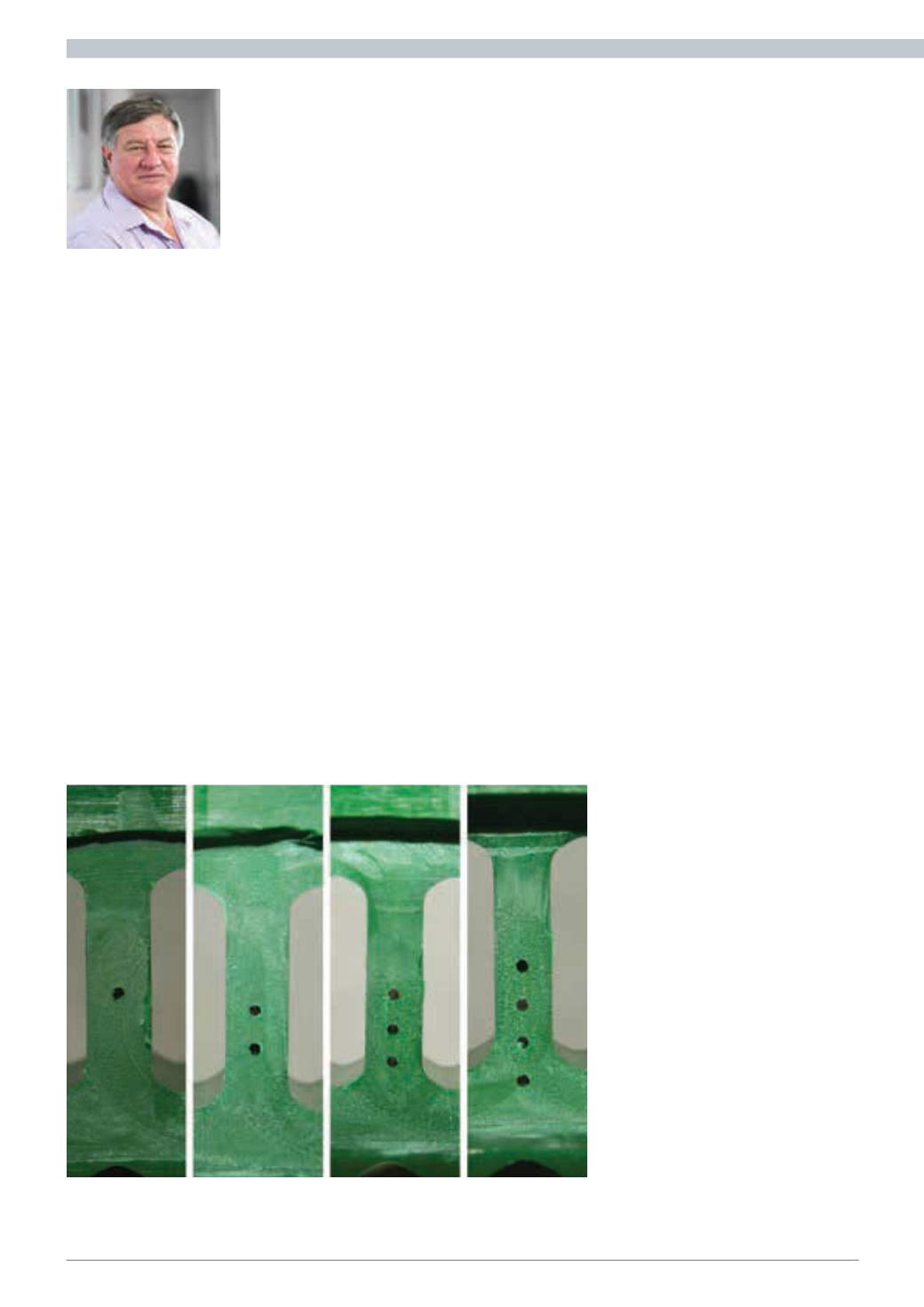

30
¦
MechChem Africa
•
April 2017
A
ccording to Spike Taylor, managing
director of Multotec Rubber, the
company’swearsystemsaresimple
but highly effective, assisting cus-
tomers in achieving the longest possible life
between replacements and reducing plant
downtime.
“Apart from providing customers with
cost-effective solutions, we also want our
customers to have the best user experience
whenworkingwithour products,” says Taylor.
“To do that, we have designed early warning
systemsthatcanbevisuallycheckedwithease
and with high levels of safety.”
He highlights that the successful imple-
mentation of these systems was done with-
out raising the products’ cost to customer, a
significant advantage for customers, as most
of themuse large quantities ofMultotecwear
products in their equipment.
The Group’s wear solutions are applied to
a range of applications including mills, scrub-
bers, pipelines, transfer points and chutes
Screen panels
Screen panels, produced by Multotec
Early warning systems across a range of Multotec’s wear solutions – built in as standard and at
no added expense – are important aspects of the group’s efforts to save customers from the high
cost of unexpected failure.
Spike Taylor, managing director
of Multotec Rubber.
The wear indicator on Multotec’s screen panels comprises four or five moulded “pin-hole” cavities in the
body of the panel, spaced at predetermined intervals below the upper wear surface. The holes become
visible one by one as the pane wears.
Multotec’s wear and risk
warning systems
Manufacturing in a range of materials,
need to be replaced at the right time if the
customer is to derive the most value from
them. “This time can either be just before
the metallurgical end-of-life or before the
apertures on the panel are worn too large,”
Taylor says. “With, typically, hundreds of pan-
els on a screen deck and uneven wear across
the screen, it is crucial to identify the most
worn panels and to replace them. If this is not
done, the panel couldwear through, allowing
oversizedparticles topass into the underflow
andblockor damagedownstreamequipment,
not tomention the unplanned downtime that
this would incur.”
Thewear indicator oneachpanel compris-
es four or fivemoulded cavities in the body of
the panel, spaced at predetermined intervals
below the upper wear surface. “The cavities
are like pin-holes, large enough to be visible
to the naked eye but small enough to prevent
material getting into themand blocking them
from view,” says Taylor. “As the panel surface
is worn away, one cavity becomes visible and,
as furtherwear takes place, the second cavity
is also visible, and so on until all cavities are
visible and the operator knows that replace-
ment must be conducted or planned shortly.”
This simple but innovative system, pat-
ented by Multotec, not only indicates when
replacement needs to take place, but can be
used as a data source to measure the rate of
wear so that a future replacement time can
be predicted and planned.
“Accurate recording of the time lapse or
the tonnage treatedbetween the exposure of
one cavity and the next allows the customer
to calculate awear rate,” Taylor explains. “This
rate lets thecustomerworkout thepanels’ life
with considerable certainty, so that a future
change-out date can be accurately set.”
The number of cavities that are exposed
before replacement is carriedoutwill depend
on the different perforated thicknesses or
aperture sizes and the harshness of the ap-
plication in question.
Cyclones
GroupcompanyMultotecProcess Equipment
supplies a wide variety of cyclones, among
them the HC cyclone range, which comprises
a mild steel outer shell and an inner, wear
surface of thick, loose rubber lining. “The key
design feature for early warning of wear is
a ‘weep hole’ in the mild steel shell,” Taylor
explains. “If the rubber lining wears through
or is severely damaged by a large or sharp
particle, the slurry will leak between the lin-
ing and the shell and escape from the cyclone
through the weep hole – which is filled only
witha looseplastic insert. The internal surface
of the plastic inserts prevents the liner from
blocking the weep hole.”
Being alerted to the lining failure by slurry
on theplant floor removes the riskof the steel
case being irretrievably damaged while not
protected by the lining, which would lead to
the expensive and time-consuming process of
changing the cyclone body.
The advantage of the weep hole is also
that the inspection of the cyclone can be
done while it is in operation. As soon as a
problem is identified, the cyclone can simply
be removed from the circuit and, if possible,
substituted while the loose liner is replaced.
This also means that the maximum lifespan
of the liner can be extracted, helping reduce
operating costs.
















